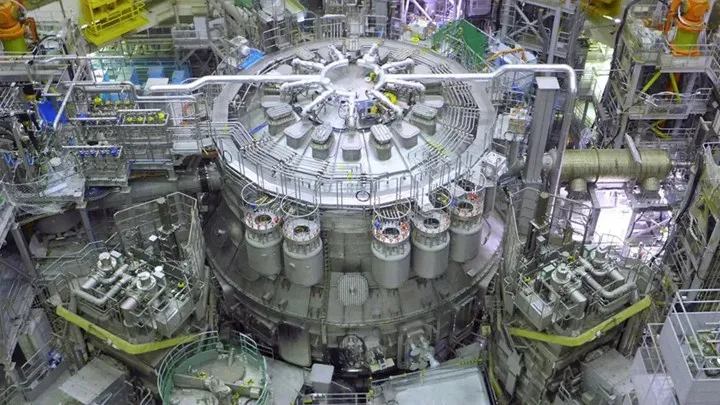Japan’s new nuclear fusion reactor begins operating

Japan’s new advanced nuclear fusion reactor has started operating for the first time. After 15 years of construction and testing, the reactor named JT-60SA succeeded in producing the first plasma on October 26.

Japan’s new advanced nuclear fusion reactor has started operating for the first time. After 15 years of construction and testing, on October 26, the reactor named JT-60SA managed to trap hot plasma for the first time with the help of superconducting magnets in the middle chamber.
The reactor aims to assist the ITER (International Thermonuclear Experimental Reactor) in France, which is being built to produce energy from nuclear fusion.
It can maintain a temperature of 200 million degrees for 100 seconds
The reactor was designed to heat the plasma up to 200 million degrees and maintain this temperature for 100 seconds. This time is much longer than previous tokamak reactors. Thus, researchers will have the opportunity to examine how to control and optimize the stability and performance of plasma.
JT-60SA will also assist ITER, a massive nuclear reactor being built in France, to demonstrate that fusion reactors can produce more energy than they consume. The technological and technical information obtained from JT-60SA will be used in the reactor at ITER.
Delayed due to earthquake and problems
In exchange for Japan allowing France to host ITER, Japan received the right to build the JT-60SA and two small fusion facilities. The reactor, which is part of the agreement signed between Japan and the EU in 2007, was built from scratch, but its cost was not disclosed. The reactor, which was planned to be completed in 2016, was delayed due to the design change after the 2011 Japan earthquake and problems that occurred during testing in 2021.
The reactor, which is half the height of ITER, has a height of 16 meters and a diameter of 13 meters. It can also carry 135 cubic meters of plasma, one-sixth the size of ITER.
However, JT-60SA has a disadvantage. The reactor uses hydrogen and deuterium, an isotope of hydrogen, instead of tritium. Tritium is a stronger but also more expensive and rare isotope of hydrogen. ITER will use deuterium and tritium together starting from 2035, as it is a more preferred fuel in energy production.
Japan also aims to build another power plant called DEMO by 2050.






